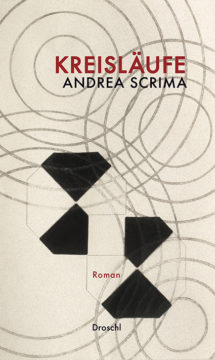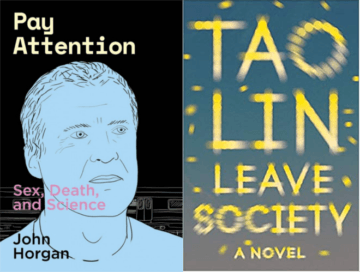Like Lips, Like Skins, Andrea Scrima’s second novel (German edition: Kreisläufe, Literaturverlag Droschl 2021), is a diptych; the first half of the book is dedicated to the first-person narrator’s mother, the second half to her late father. We meet Felice in the early eighties as a young art student in New York and as a newcomer to West Berlin before and after the fall of the Berlin Wall; ten years later, she returns to New York to install an exhibition of her work. Another fifteen years pass and we encounter her as a single mother poring over her father’s journals in search of her family’s past. Like Lips, Like Skins is about art, memory, and the repetitions of trauma. The first chapter was published in issue 232 of the Austrian literary magazine manuskripte; English-language excerpts have appeared in Trafika Europe, StatORec, and Zyzzyva. The German version of this interview appeared in issue 234 of manuskripte. Ally Klein interviewed the author over the course of several weeks via email.

Ally Klein: There’s a scene in Like Lips, Like Skins in which the first-person narrator, Felice, recalls studying the Sunday comics as a child. She buries her nose in the newsprint; when she fetches a magnifying glass to get closer, she discovers an “accumulation of tiny dots.” Individually, they’re no more than “lopsided splotch[es],” but together give rise to a bigger picture. I see a parallel here to the way the novel is stylistically conceived. Memories pop up seemingly at random, and in the end, they produce an image that works intuitively. The book eludes a stringent retelling, but leaves the reader with a sense of understanding something that can’t be expressed in terms of an idea or concept. The discoveries, if that’s what they can be called, are situated elsewhere.
Andrea Scrima: As a child, Felice doesn’t yet know that the interaction between the eye and brain fills in the gaps, the missing information between disparate points; for her, it’s just magic. I use language to create imagery that can exist outside of description or symbolism. In literature, images often have a function, they’re there to convey a certain idea. But some images are irreducible, they’re not all that easy to explain. And these are the ones that interest me most: they’re autonomous, they have a life of their own. Sometimes they’re a bit uncanny.
I’m interested in literature’s resilience, its ability to find a formal language for phenomena that can’t be easily captured in words. A language the reader somehow perceives as “true,” even if they can’t necessarily say how or why. Read more »



